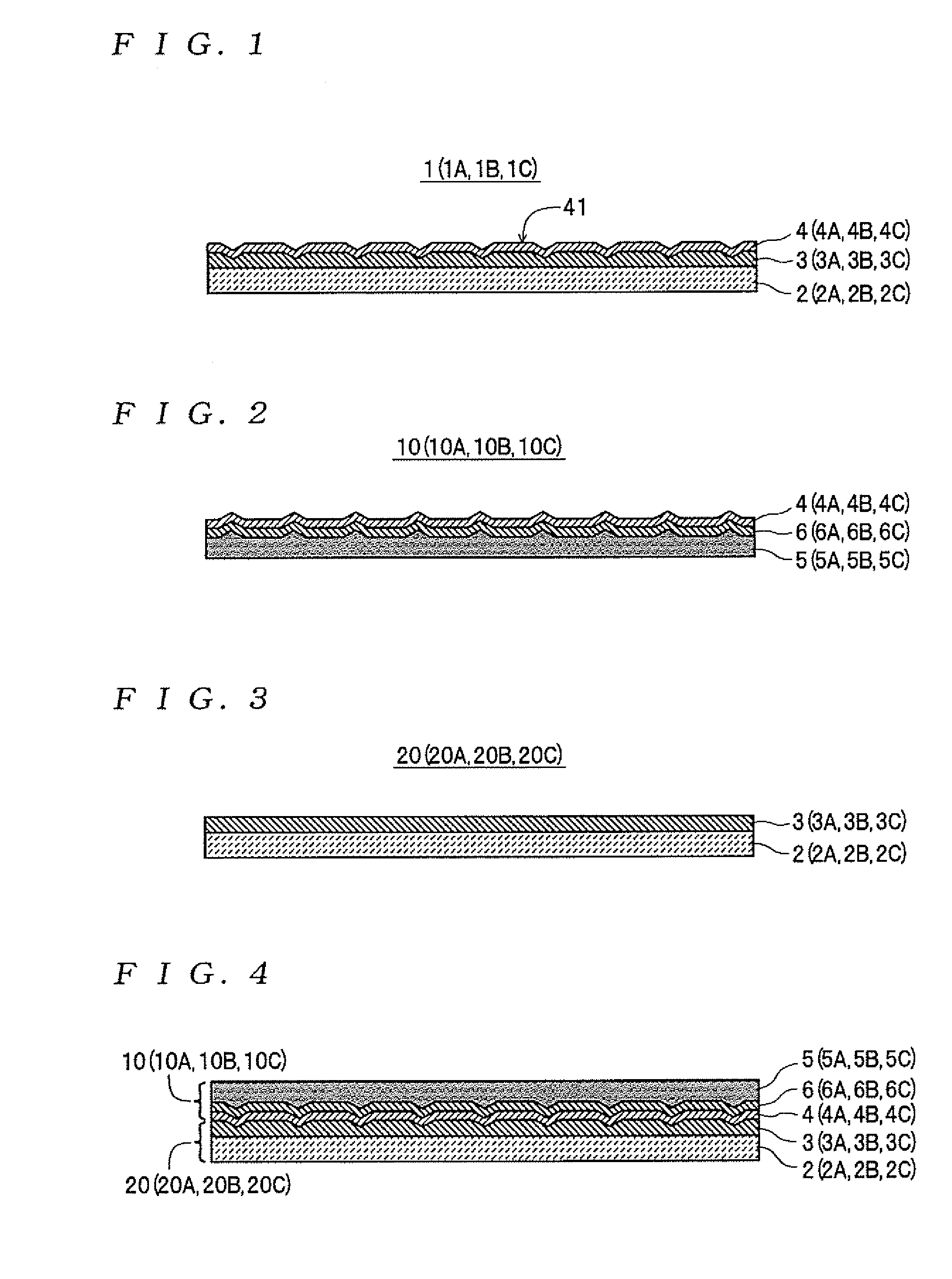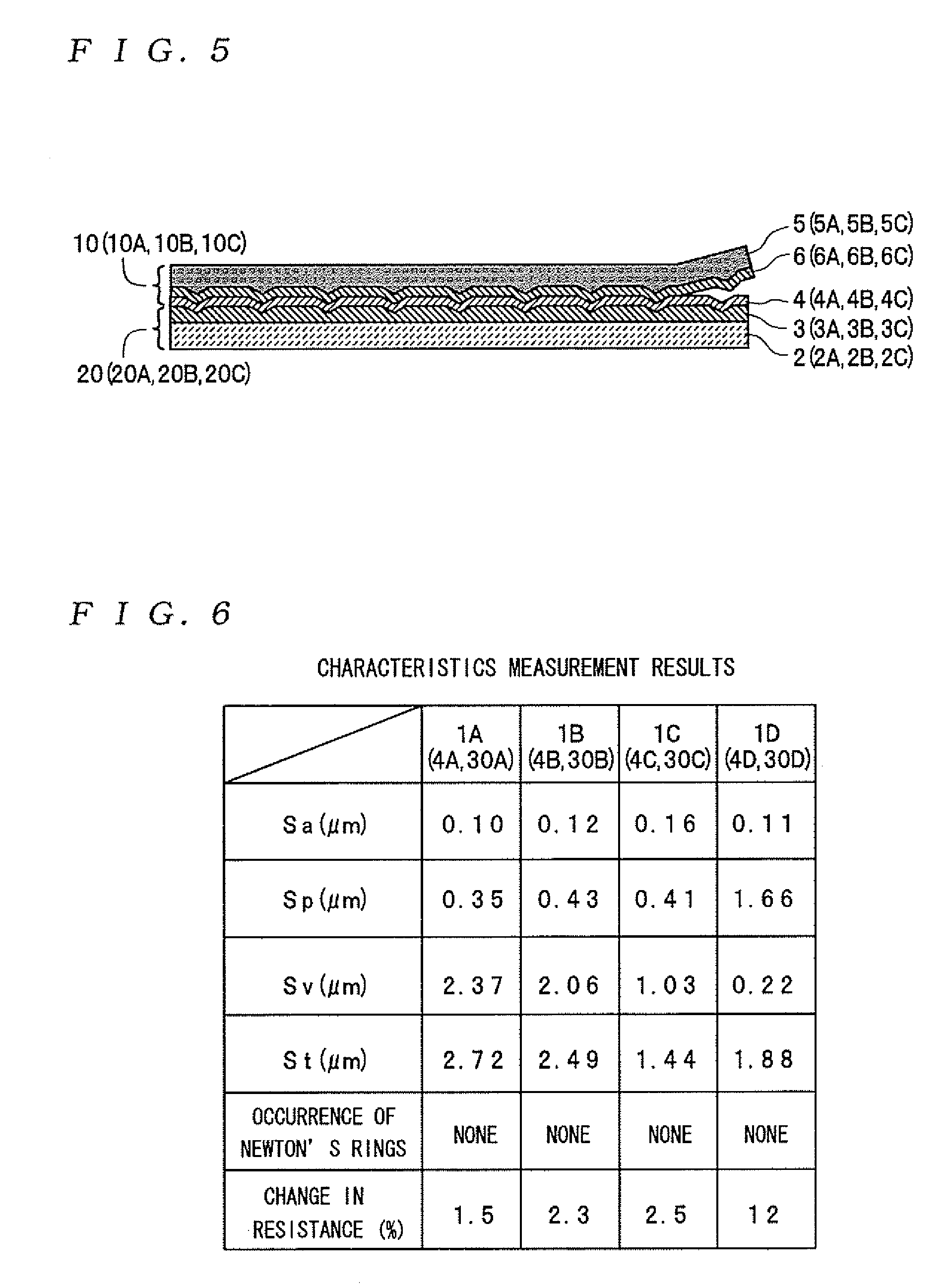Transparent conductor
a conductor and transparent technology, applied in the direction of insulated conductors, cables, instruments, etc., can solve the problems of difficult to specify a touch position, difficult to fix, and damage to the surface of the transparent thin-film electrode layer of the inner transparent electrode disposed on the display side opposite the outer transparent electrode, so as to reduce the production of newton's rings, improve durability, and reduce the damage to the surface more reliably
- Summary
- Abstract
- Description
- Claims
- Application Information
AI Technical Summary
Benefits of technology
Problems solved by technology
Method used
Image
Examples
Embodiment Construction
[0026]Preferred embodiments of a transparent conductor according to the present invention will now be described with reference to the attached drawings.
[0027]First, the construction of a transparent conductive film 1 will be described with reference to the drawings.
[0028]The transparent conductive film 1 shown in FIG. 1 is one example of a transparent conductor according to the present invention and includes a support 2, a resin layer 3, and a transparent conductive layer 4. Note that the term “transparent” for the present invention means that visible light can be transmitted and includes a state where some scattering of light occurs. Here, the extent to which light is scattered differs according to the intended use of the transparent conductive film 1, with a level of scattering normally referred to as “semi-transparent” also included in the term “transparent” for the present invention.
[0029]The support 2 is formed in a film-like form or plate-like form using a transparent material...
PUM
| Property | Measurement | Unit |
|---|---|---|
| surface roughness | aaaaa | aaaaa |
| surface roughness | aaaaa | aaaaa |
| surface roughness | aaaaa | aaaaa |
Abstract
Description
Claims
Application Information
 Login to View More
Login to View More - R&D
- Intellectual Property
- Life Sciences
- Materials
- Tech Scout
- Unparalleled Data Quality
- Higher Quality Content
- 60% Fewer Hallucinations
Browse by: Latest US Patents, China's latest patents, Technical Efficacy Thesaurus, Application Domain, Technology Topic, Popular Technical Reports.
© 2025 PatSnap. All rights reserved.Legal|Privacy policy|Modern Slavery Act Transparency Statement|Sitemap|About US| Contact US: help@patsnap.com



